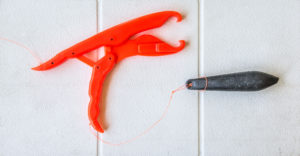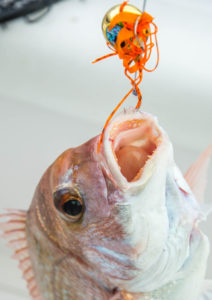
What is barotrauma? Barotrauma usually refers to injury caused by a change in pressure when fish are retrieved from depths of 20 meters or more to the surface.
Some species like kingfish and kahawai are more resilient when being pulled from depths of 30 meters or more. The popular snapper however starts to succumb to the change in pressure and although they are effected by barotrauma, there are ways to minimise the effects and give them a good chance at survival.
Firstly, if you catch a legal sized fish from any depth, keep it and then stop fishing once you have caught your limit or caught the number of fish you need for the day.
There has been a popular misconception that slowly retrieving a fish from depth will eliminate barotrauma. The time it takes fish to depressurise is closer to hours and not minutes, so it is a better strategy to quickly pull the fish up and then release it quickly and carefully so it has more energy to get back down to a comfortable depth.
 The fastest way to return a fish back to the depth it came from is with a descender rig. There are commercial versions in Australia but a home-made job is very easy to whip up. Simply drill holes in the top and bottom handles of a pair of plastic fish grips, add a puka bomb (16oz or heavier) via a 30cm section of heavy mono to the lower handle and tie your line to the upper handle. The grips are carefully attached to the lower jaw of the fish and then gently lowered into the water. The rig descends to the bottom and a quick jerk on the line releases the fish.
The fastest way to return a fish back to the depth it came from is with a descender rig. There are commercial versions in Australia but a home-made job is very easy to whip up. Simply drill holes in the top and bottom handles of a pair of plastic fish grips, add a puka bomb (16oz or heavier) via a 30cm section of heavy mono to the lower handle and tie your line to the upper handle. The grips are carefully attached to the lower jaw of the fish and then gently lowered into the water. The rig descends to the bottom and a quick jerk on the line releases the fish.
If you don’t have a descender rig, puncturing the buccal cavity that is protruding from the mouth is an acceptable approach and a study in Australia showed reasonable survival rates. Using the tip of a hook or similar small sharp clean object is the way to do this.
Remember, every second counts as the longer a fish is out of the water, suffering from barotrauma, the less its chances of survival when returned. Takes photos quickly (have the camera all ready to go) and handle the fish as little as possible before release.
For more details on handling and release techniques go to www.fishcare.co.nz/handling-and-releasing
Photo credits: Digital Fish


